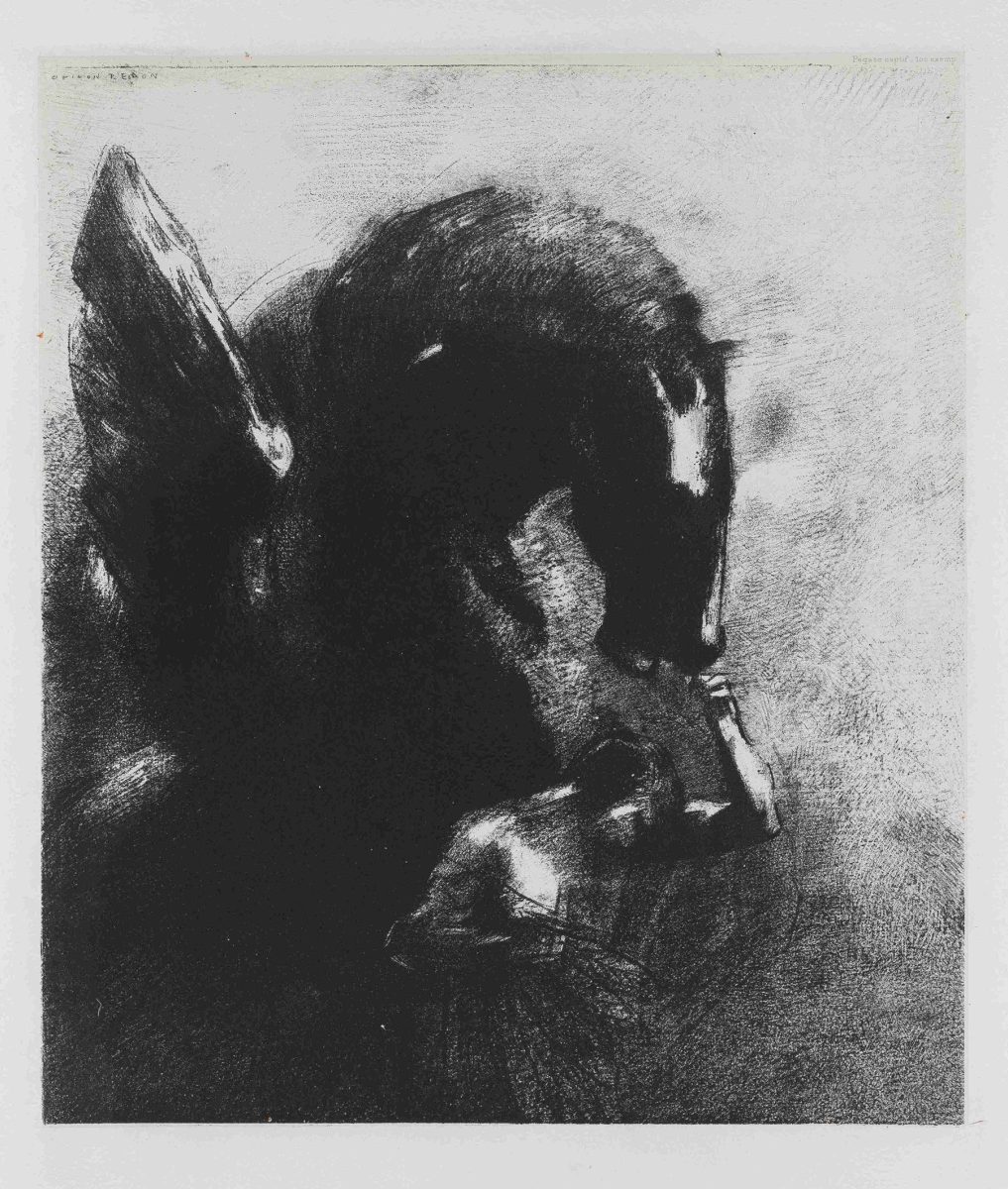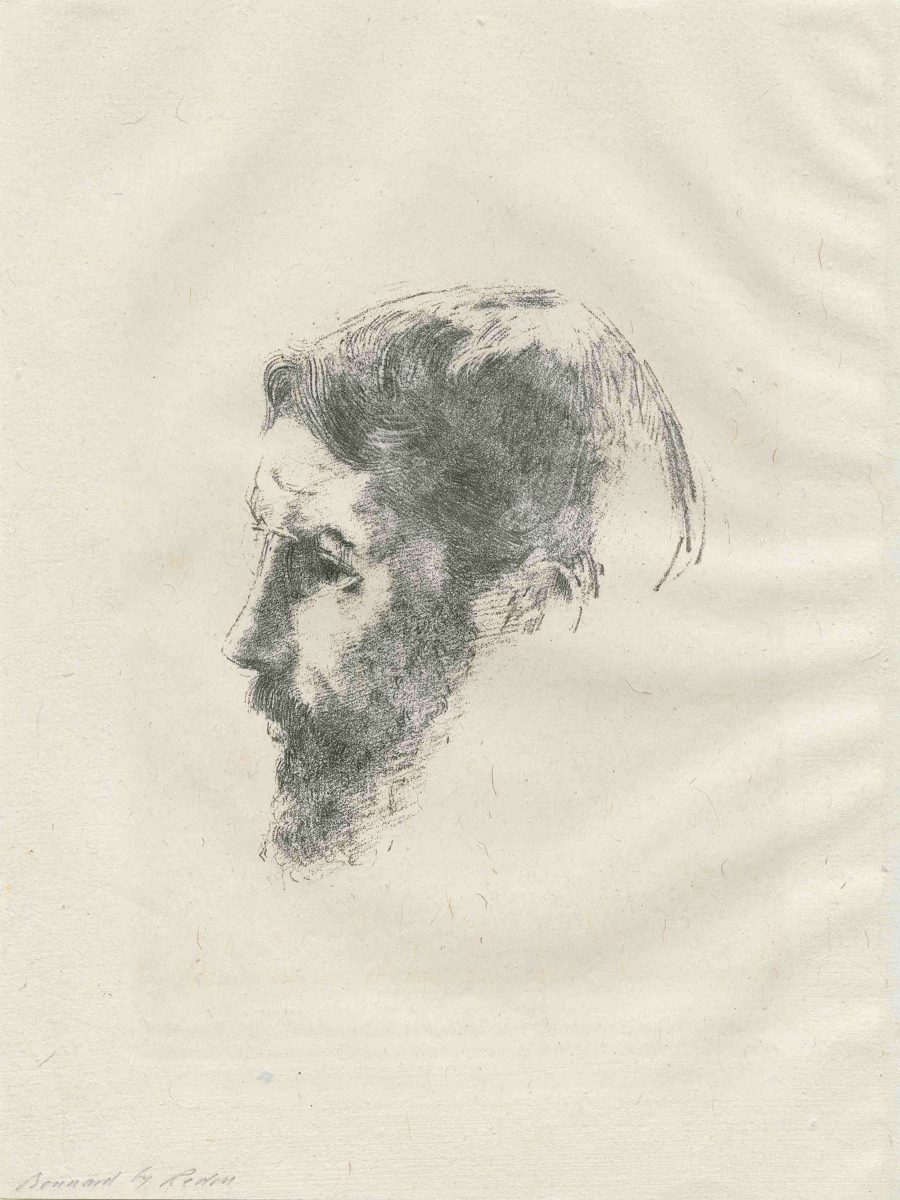An artist of the inner world, Odilon Redon is renowned for his unique body of engraved work, where lithography plays a central role. The Foundation William Cuendet & Atelier de Saint-Prex proudly owns several of his plates, including Le Sommeil (Sleep), Les yeux clos (Eyes Closed) and striking print from Pégase captif (Captive Pegasus), notable for its magnificently contrasting inking.
Redon’s fascination with drawing blossomed during a lonely childhood on the family estate of Peyrelebade, near Bordeaux. His early artistic training came from painter Stanislas Gorin (1824–1874) and was later enriched by his admiration for Delacroix. Throughout his youth in Bordeaux, two significant encounters shaped his development: with botanist Armand Clavaud (1828–1890), who introduced him to science and contemporary literature (including the works of Baudelaire and Flaubert), and with engraver Rodolphe Bresdin (1822–1885), who taught him the techniques of etching and lithography.
During the 1860s, Redon honed his craft, exploring various artistic techniques. His experience as a soldier during the Franco-Prussian War in 1870 left a lasting impression on him and marked a pivotal moment in his artistic development. After the war, he moved to Paris, where he embraced a unique artistic path, distancing himself not only from academic styles but also from rival movements of the avant-garde. The first phase of Redon's oeuvre, which uses lithography and charcoal to create evocative contrasts of light and shadow, reveals a distinctive universe, rich in suggestion, ambiguity and dreams. In opposition to objective approach of the Impressionists, Redon's graphic works assert a ‘right to fantasy’, reflecting his commitment to subjectivity and imagination.
It was not until 1881 that Redon, already in his forties, exhibited his works in Paris for the first time, at La Vie moderne. This exhibition caught the attention of critic Émile Hennequin and writer Joris-Karl Huysmans, who later praised Redon’s "particular imagination" and "unimaginable apparitions" in his famous novel À Rebours (1884). The exposure from that book earned Redon recognition among the literary and artistic elite and enabled him to connect with the poet Stéphane Mallarmé and painters Pierre Bonnard, Édouard Vuillard and Maurice Denis.
In the mid-1890s, Redon underwent a dramatic transformation in his artistic style: moving away from the stark contrasts of black and white that defined his early bodies of work, the artist embraced colour, shifting from lithography to a new focus on pastels. This period was distinguished by floral motifs and portraits of women and children. Deeply affected by the onset of the First World War, in which his son was involved, Redon died in Paris in 1916 at the age of 76.
-
The collection of the Fondation William Cuendet & Atelier de Saint-Prex includes six prints by Odilon Redon. Three of these works (Cain and Abel, Entretien mystique and Le Sommeil) come from the collection of Isabelle and Jacques Treyvaud, while another (Portrait of the painter Pierre Bonnard) is from the collection of Gérard de Palézieux. Two additional lithographs were acquired in 2017 and 2020.


